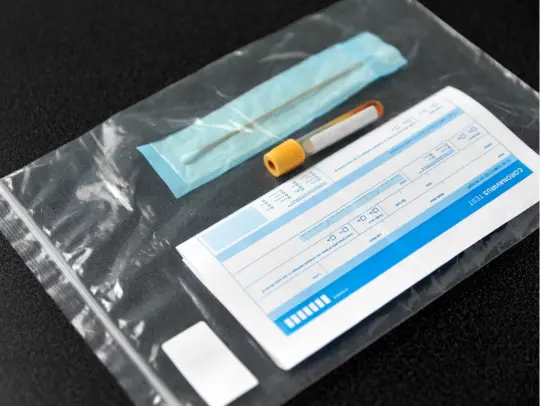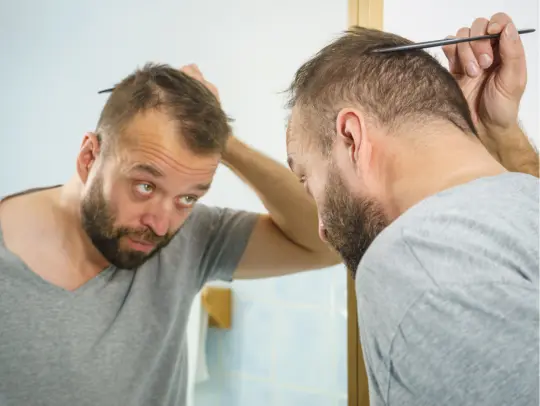
Understanding Mismatched Sex Drives: Navigating the Four Stages of Desire
Different Sex Drives in Relationships: Causes, Types & Solutions
When Sexual Desire Doesn't Align
Have you ever found yourself in a relationship where your sexual drive doesn't match your partner's energy? This common challenge, known as "sexual desire mismatch" or "desire discrepancy," affects most couples at some point in their relationship journey.
This scenario illustrates a common dynamic in long-term relationships, where partners' sexual desires don't perfectly align. Understanding the nature of desire discrepancy and developing strategies to address it can help couples maintain a fulfilling intimate connection despite differences in sexual appetite.
What Causes Mismatched Sex Drives?
Sexual desire mismatch occurs when one partner has a higher or lower sexual drive compared to the other. This discrepancy can manifest in various ways:
Age and Life Stage Factors
Contrary to some beliefs, sexual desire doesn't follow a simple trajectory across the lifespan. While many assume men have higher sex drives earlier in relationships and women "hit their stride" later, the reality is more complex and individualized. Hormonal changes, stress levels, and health conditions all play significant roles in how desire fluctuates over time.
Health and Hormonal Influences
Physical health significantly impacts libido. Conditions like thyroid disorders, depression, or cardiovascular issues can diminish sexual desire. Similarly, hormonal fluctuations—whether due to menopause, andropause, medication side effects, or stress—can create temporary or longer-term changes in sexual interest.
Psychological and Relationship Factors
Beyond physiological causes, psychological elements like stress, anxiety, unresolved relationship conflicts, or trauma can create desire discrepancies. Sometimes, what appears as a libido issue actually stems from deeper relationship dynamics that require attention.
How Common Is Desire Discrepancy?
Research indicates that sexual desire mismatch is remarkably common. Studies suggest up to 80% of couples experience it at some point in their relationship. Given life's various challenges, having perfectly aligned desires throughout a long-term relationship is quite unrealistic.
The Four Stages of Sexual Desire
Understanding the different ways people experience sexual desire can help partners bridge the gap in their intimate expectations. Let's explore the four distinct types of desire patterns:
1. Spontaneous Desire
Spontaneous desire is what we often see portrayed in media—an immediate urge for sexual activity that seems to arise without obvious triggers. People with predominantly spontaneous desire patterns:
- Don't require as much intimacy or affection leading up to sexual activity
- Are "ready to go" at virtually any time
- May initiate sex more frequently
- Often have higher baseline levels of sexual interest
This desire type is commonly associated with the early stages of relationships but can remain a person's primary pattern throughout life. While media representations might suggest spontaneous desire is the "normal" way to experience sexuality, it's just one of several healthy patterns.
2. Responsive Desire
Many people—including most women—experience desire primarily in response to stimuli rather than spontaneously. Those with responsive desire:
- May decide to engage in sexual activity before feeling aroused
- Find desire emerging as a result of intimate interaction
- Require additional time for arousal, even after foreplay begins
- Need affection and sensual touch to put their mind and body at ease
For those with responsive desire, triggers might include long hugs, back or neck rubs, cuddling, showering together, romantic gestures, verbal affirmations, or emotional validation. Understanding that responsive desire is normal and healthy—not a dysfunction—can help partners appreciate different arousal patterns.
3. Physical Desire
Physical desire stems from attraction to a partner's physical features, considering them aesthetically pleasing or beautiful. While related to sexual attraction, physical desire encompasses non-sexual physical connection as well:
- Focuses on forms of touch that aren't necessarily sexual (hugging, kissing, massage)
- Involves physical senses, hormones, nerves, and even immune system responses
- Can be sparked by various cues: facial features, scent, skin tone/texture
- Creates a foundation for physical intimacy beyond sexual activity
Physical desire creates opportunities for connection even when sexual desire levels differ between partners. Non-sexual physical intimacy often serves as a bridge that helps partners remain connected despite mismatched libidos.
4. Intellectual Desire (Sapiosexuality)
Intellectual desire, sometimes called sapiosexuality, involves being attracted to a partner's mind rather than (or in addition to) their body. For those who experience intellectual desire:
- Intelligence is sexually attractive and arousing
- Mental stimulation must precede sexual stimulation
- Engaging conversations ("picking their brain") create connection
- Emotional and intellectual intimacy lay groundwork for physical intimacy
Intellectual desire often becomes more prominent in long-term relationships or as partners age, providing a pathway to intimacy that complements or sometimes substitutes for purely physical connection.
Addressing Mismatched Desire in Relationships
When sexual desire discrepancy causes distress in a relationship, taking proactive steps can help bridge the gap:
Communication: The Foundation of Resolution
Effective communication stands at the forefront of resolving desire discrepancies. Partners should:
- Engage in deep conversations about individual preferences
- Define clear boundaries and expectations
- Establish mutual understanding without blame
- Recognize that desire differences aren't a flaw in either partner
These conversations require vulnerability and often benefit from "I" statements rather than accusations. For example, saying "I feel closer to you when we're physically intimate more often" is more productive than "You never want to have sex anymore."
Expanding Definitions of Intimacy
Broadening the definition of "sex" and considering diverse forms of intimacy can help partners meet each other's needs:
- Explore non-genital forms of physical pleasure
- Create intimate rituals that don't always lead to intercourse
- Focus on quality of connection rather than frequency
- Cultivate sensual activities that satisfy both partners' needs for closeness
By removing pressure for every intimate encounter to follow the same script, couples often discover new ways to connect that satisfy both partners.
Scheduling and Prioritizing Intimacy
While spontaneity has its place, many successful couples find that scheduling intimate time helps address desire discrepancy:
- Set aside dedicated time for connection without distractions
- Use anticipation as an arousal tool for responsive-desire partners
- Create optimal conditions for intimacy (reduced stress, appropriate setting)
- Alternate between different types of intimate activities
Some find the idea of scheduled intimacy unromantic, but many couples discover it actually increases anticipation and ensures intimacy doesn't get lost in busy schedules.
Professional Support and Resources
For couples struggling to overcome desire discrepancy hurdles, seeking professional guidance can be transformative:
Therapy Options
- Sex therapy addresses specific sexual concerns with practical techniques
- Emotionally-focused therapy helps couples explore deeper emotional patterns
- Couples counseling improves general communication and conflict resolution
- Individual therapy may help when personal issues impact sexual desire
Medical Support
Sometimes medical intervention is appropriate, particularly when desire issues stem from:
- Hormonal imbalances
- Medication side effects
- Underlying health conditions
- Sexual dysfunction requiring treatment
A thorough evaluation with a healthcare provider can identify whether physical factors are contributing to desire discrepancies.
The Bigger Picture of Intimacy
As we navigate the complexities of mismatched desire, it's essential to remember that intimacy encompasses far more than sexual frequency. It includes trust, emotional connection, shared experiences, and mutual growth.
A strong relational foundation goes a long way in cushioning the impact of desire discrepancies. When couples share a deep emotional bond, variations in sexual interest become less concerning as the overall strength of the relationship takes precedence.
Each individual and couple is unique—what works for one relationship may not be the solution for another. However, by fostering open communication, mutual respect, and continuous learning, couples can navigate sexual desire discrepancy with greater confidence and understanding.
Ultimately, intimacy isn't solely defined by sexual desire. By prioritizing holistic well-being—both physical and emotional—partners can create a satisfying connection that honors both individuals' needs and celebrates the beautiful tapestry of love and connection that makes each relationship unique.



































































































































